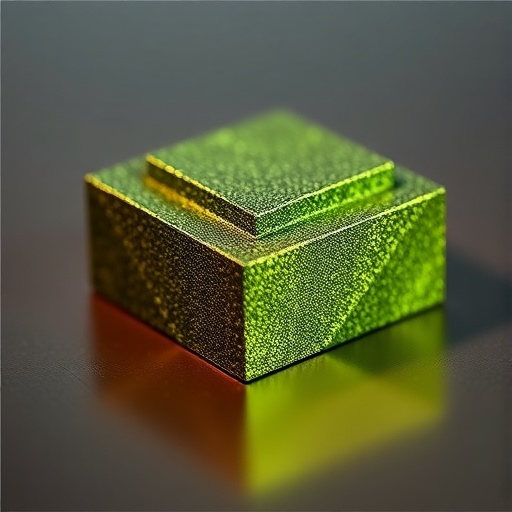In recent years, the development of advanced battery technologies has garnered significant attention, primarily due to the rising demand for efficient energy storage solutions. Among various options, zinc-ion batteries have emerged as a promising alternative, especially in the realm of aqueous systems, which are both cost-effective and environmentally friendly. A recent study explores the innovative use of vanadium pentoxide (V2O5) and tungsten disulfide (WS2) composites in enhancing the performance of these batteries. The research, led by Yin et al., sets forth a compelling narrative on how synergistic materials can transform the efficiency, capacity, and longevity of aqueous zinc-ion battery technology.
The study meticulously investigates the unique properties of V2O5 and WS2, both of which are known for their high electrochemical performances. When combined, these materials exhibit synergistic effects that enhance various battery parameters. V2O5 provides an excellent redox reaction capacity, while WS2 contributes to improved electron and ion conductivity. The integration of these materials not only increases the active material’s overall capacity but also ensures better cycle stability under operational conditions.
The researchers delve into the synthesis of V2O5/WS2 composite cathodes through a simple and effective methodology that preserves the structural integrity and functional properties of the constituent materials. By employing straightforward techniques, they achieved uniform dispersion of WS2 within the V2O5 matrix. This uniformity is critical, as it allows for more effective interactions between ions during the charge and discharge cycles, boosting the overall performance of the cathode.
Moreover, the study highlights the significance of the electrochemical characterization of the composite cathode. Using advanced techniques, the authors evaluate key performance indicators such as specific capacity, rate capability, and cycling stability. The V2O5/WS2 composite displays a remarkable specific capacity well beyond that of conventional materials, which could revolutionize the current standards for aqueous zinc-ion batteries.
In the realm of cycling stability, research findings reveal that the V2O5/WS2 composite outperforms many existing cathode materials. For any battery, longevity and the ability to maintain performance over extended use are crucial. The results indicate that this composite maintains structural integrity even after numerous charge-discharge cycles, offering an impressive longevity that is essential for commercial viability.
Another pivotal aspect of the research is the identification of the mechanisms behind the enhanced electrical conductivity. The authors discuss how the layered structure of WS2 plays a significant role in facilitating the movement of charge carriers, thus reducing resistance within the battery system. This behavior is fundamental in achieving quicker charge and discharge rates, which is a key factor for modern applications requiring rapid energy deployment.
Environmental considerations are also a significant focus of this research. Aqueous zinc-ion batteries, particularly those utilizing natural and less hazardous materials like zinc, present a sustainable option compared to lithium-ion systems. With the ongoing global push toward greener technologies, this study presents a forward-thinking approach to battery design that aligns with sustainability goals. The synergistic composite of V2O5 and WS2 not only enhances performance but does so within an environmentally friendly framework.
Furthermore, the scalability of producing V2O5/WS2 composites draws attention from both academia and industry. The methodologies explored in the study are not only cost-effective but also feasible for large-scale production. This aspect is vital for the commercial integration of these materials into consumer electronics, electric vehicles, and renewable energy storage solutions.
As the research unfolds, the implications of this innovative composite technology extend to various sectors beyond traditional battery applications. Electric mobility, large-scale renewable energy systems, and portable electronics are poised to benefit significantly from these advancements. The energy density improvements alongside cycling stability could redefine the expectations for future energy storage devices.
In summary, Yin et al.’s research on the synergistic V2O5/WS2 composite cathode marks a significant advancement in aqueous zinc-ion battery technologies. Their findings not only highlight performance enhancements but also underscore the importance of sustainable practices in energy storage solutions. As researchers continue to explore the boundaries of material science, the insights from this study pave the way for innovative approaches to tackling the challenges of future energy demands.
The potential for this composite cathode technology is vast, and the interview with the lead researcher suggests ongoing investigations into its long-term effects and operational efficiency in various real-world applications. Battery technologies are rapidly evolving, and this research demonstrates a strong step forward in developing high-capacity, long-lasting, and environmentally friendly energy storage systems critical to shaping a sustainable future.
As we look forward, it will be essential to monitor the progress of technologies such as these and their integration into everyday applications. The research community remains engaged, and further developments will likely transpire as this innovative work continues to inspire new solutions within the realm of energy storage.
Subject of Research: Development of V2O5/WS2 composite cathodes for aqueous zinc-ion batteries.
Article Title: Synergistic V2O5/WS2 composite cathode for high-capacity and long-cycling aqueous zinc-ion batteries.
Article References:
Yin, Y., Li, M., Cao, M. et al. Synergistic V2O5/WS2 composite cathode for high-capacity and long-cycling aqueous zinc-ion batteries.
Ionics (2025). https://doi.org/10.1007/s11581-025-06621-6
Image Credits: AI Generated
DOI: https://doi.org/10.1007/s11581-025-06621-6
Keywords: Aqueous zinc-ion batteries, V2O5, WS2, composite cathode, electrochemical performance, sustainability.




